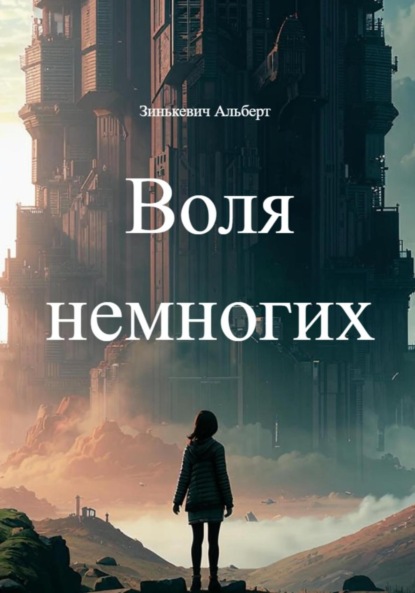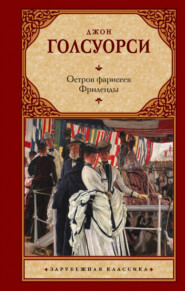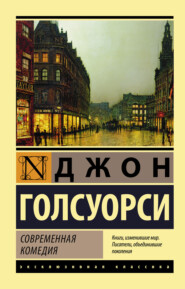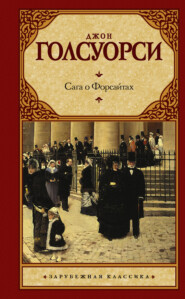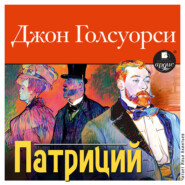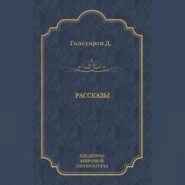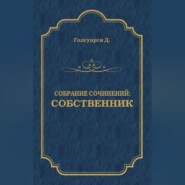По всем вопросам обращайтесь на: info@litportal.ru
(©) 2003-2025.
✖
The Complete Essays of John Galsworthy
Настройки чтения
Размер шрифта
Высота строк
Поля
Impersonal emotion! And what – I thought do I mean by that? Surely I mean: That is not Art, which, while I, am contemplating it, inspires me with any active or directive impulse; that is Art, when, for however brief a moment, it replaces within me interest in myself by interest in itself. For, let me suppose myself in the presence of a carved marble bath. If my thoughts be “What could I buy that for?” Impulse of acquisition; or: “From what quarry did it come?” Impulse of inquiry; or: “Which would be the right end for my head?” Mixed impulse of inquiry and acquisition – I am at that moment insensible to it as a work of Art. But, if I stand before it vibrating at sight of its colour and forms, if ever so little and for ever so short a time, unhaunted by any definite practical thought or impulse – to that extent and for that moment it has stolen me away out of myself and put itself there instead; has linked me to the universal by making me forget the individual in me. And for that moment, and only while that moment lasts, it is to me a work of Art. The word “impersonal,” then, is but used in this my definition to signify momentary forgetfulness of one’s own personality and its active wants.
So Art – I thought – is that which, heard, read, or looked on, while producing no directive impulse, warms one with unconscious vibration. Nor can I imagine any means of defining what is the greatest Art, without hypothecating a perfect human being. But since we shall never see, or know if we do see, that desirable creature – dogmatism is banished, “Academy” is dead to the discussion, deader than even Tolstoy left it after his famous treatise “What is Art?” For, having destroyed all the old Judges and Academies, Tolstoy, by saying that the greatest Art was that which appealed to the greatest number of living human beings, raised up the masses of mankind to be a definite new Judge or Academy, as tyrannical and narrow as ever were those whom he had destroyed.
This, at all events – I thought is as far as I dare go in defining what Art is. But let me try to make plain to myself what is the essential quality that gives to Art the power of exciting this unconscious vibration, this impersonal emotion. It has been called Beauty! An awkward word – a perpetual begging of the question; too current in use, too ambiguous altogether; now too narrow, now too wide – a word, in fact, too glib to know at all what it means. And how dangerous a word – often misleading us into slabbing with extraneous floridities what would otherwise, on its own plane, be Art! To be decorative where decoration is not suitable, to be lyrical where lyricism is out of place, is assuredly to spoil Art, not to achieve it. But this essential quality of Art has also, and more happily, been called Rhythm. And, what is Rhythm if not that mysterious harmony between part and part, and part and whole, which gives what is called life; that exact proportion, the mystery of which is best grasped in observing how life leaves an animate creature when the essential relation of part to whole has been sufficiently disturbed. And I agree that this rhythmic relation of part to part, and part to whole – in short, vitality – is the one quality inseparable from a work of Art. For nothing which does not seem to a man possessed of this rhythmic vitality, can ever steal him out of himself.
And having got thus far in my thoughts, I paused, watching the swallows; for they seemed to me the symbol, in their swift, sure curvetting, all daring and balance and surprise, of the delicate poise and motion of Art, that visits no two men alike, in a world where no two things of all the things there be, are quite the same.
Yes – I thought – and this Art is the one form of human energy in the whole world, which really works for union, and destroys the barriers between man and man. It is the continual, unconscious replacement, however fleeting, of oneself by another; the real cement of human life; the everlasting refreshment and renewal. For, what is grievous, dompting, grim, about our lives is that we are shut up within ourselves, with an itch to get outside ourselves. And to be stolen away from ourselves by Art is a momentary relaxation from that itching, a minute’s profound, and as it were secret, enfranchisement. The active amusements and relaxations of life can only rest certain of our faculties, by indulging others; the whole self is never rested save through that unconsciousness of self, which comes through rapt contemplation of Nature or of Art.
And suddenly I remembered that some believe that Art does not produce unconsciousness of self, but rather very vivid self-realisation.
Ah! but – I though – that is not the first and instant effect of Art; the new impetus is the after effect of that momentary replacement of oneself by the self of the work before us; it is surely the result of that brief span of enlargement, enfranchisement, and rest.
Yes, Art is the great and universal refreshment. For Art is never dogmatic; holds no brief for itself you may take it or you may leave it. It does not force itself rudely where it is not wanted. It is reverent to all tempers, to all points of view. But it is wilful – the very wind in the comings and goings of its influence, an uncapturable fugitive, visiting our hearts at vagrant, sweet moments; since we often stand even before the greatest works of Art without being able quite to lose ourselves! That restful oblivion comes, we never quite know when – and it is gone! But when it comes, it is a spirit hovering with cool wings, blessing us from least to greatest, according to our powers; a spirit deathless and varied as human life itself.
And in what sort of age – I thought – are artists living now? Are conditions favourable? Life is very multiple; full of “movements,” “facts,” and “news”; with the limelight terribly turned on – and all this is adverse to the artist. Yet, leisure is abundant; the facilities for study great; Liberty is respected – more or less. But, there is one great reason why, in this age of ours, Art, it seems, must flourish. For, just as cross-breeding in Nature – if it be not too violent – often gives an extra vitality to the offspring, so does cross-breeding of philosophies make for vitality in Art. I cannot help thinking that historians, looking back from the far future, will record this age as the Third Renaissance. We who are lost in it, working or looking on, can neither tell what we are doing, nor where standing; but we cannot help observing, that, just as in the Greek Renaissance, worn-out Pagan orthodoxy was penetrated by new philosophy; just as in the Italian Renaissance, Pagan philosophy, reasserting itself, fertilised again an already too inbred Christian creed; so now Orthodoxy fertilised by Science is producing a fresh and fuller conception of life – a love of Perfection, not for hope of reward, not for fear of punishment, but for Perfection’s sake. Slowly, under our feet, beneath our consciousness, is forming that new philosophy, and it is in times of new philosophies that Art, itself in essence always a discovery, must flourish. Those whose sacred suns and moons are ever in the past, tell us that our Art is going to the dogs; and it is, indeed, true that we are in confusion! The waters are broken, and every nerve and sinew of the artist is strained to discover his own safety. It is an age of stir and change, a season of new wine and old bottles. Yet, assuredly, in spite of breakages and waste, a wine worth the drinking is all the time being made.
I ceased again to think, for the sun had dipped low, and the midges were biting me; and the sounds of evening had begun, those innumerable far-travelling sounds of man and bird and beast – so clear and intimate – of remote countrysides at sunset. And for long I listened, too vague to move my pen.
New philosophy – a vigorous Art! Are there not all the signs of it? In music, sculpture, painting; in fiction – and drama; in dancing; in criticism itself, if criticism be an Art. Yes, we are reaching out to a new faith not yet crystallised, to a new Art not yet perfected; the forms still to find-the flowers still to fashion!
And how has it come, this slowly growing faith in Perfection for Perfection’s sake? Surely like this: The Western world awoke one day to find that it no longer believed corporately and for certain in future life for the individual consciousness. It began to feel: I cannot say more than that there may be – Death may be the end of man, or Death may be nothing. And it began to ask itself in this uncertainty: Do I then desire to go on living? Now, since it found that it desired to go on living at least as earnestly as ever it did before, it began to inquire why. And slowly it perceived that there was, inborn within it, a passionate instinct of which it had hardly till then been conscious – a sacred instinct to perfect itself, now, as well as in a possible hereafter; to perfect itself because Perfection was desirable, a vision to be adored, and striven for; a dream motive fastened within the Universe; the very essential Cause of everything. And it began to see that this Perfection, cosmically, was nothing but perfect Equanimity and Harmony; and in human relations, nothing but perfect Love and Justice. And Perfection began to glow before the eyes of the Western world like a new star, whose light touched with glamour all things as they came forth from Mystery, till to Mystery they were ready to return.
This – I thought is surely what the Western world has dimly been rediscovering. There has crept into our minds once more the feeling that the Universe is all of a piece, Equipoise supreme; and all things equally wonderful, and mysterious, and valuable. We have begun, in fact, to have a glimmering of the artist’s creed, that nothing may we despise or neglect – that everything is worth the doing well, the making fair – that our God, Perfection, is implicit everywhere, and the revelation of Him the business of our Art.
And as I jotted down these words I noticed that some real stars had crept up into the sky, so gradually darkening above the pollard lime-trees; cuckoos, who had been calling on the thorn-trees all the afternoon, were silent; the swallows no longer flirted past, but a bat was already in career over the holly hedge; and round me the buttercups were closing. The whole form and feeling of the world had changed, so that I seemed to have before me a new picture hanging.
Ah! I thought Art must indeed be priest of this new faith in Perfection, whose motto is: “Harmony, Proportion, Balance.” For by Art alone can true harmony in human affairs be fostered, true Proportion revealed, and true Equipoise preserved. Is not the training of an artist a training in the due relation of one thing with another, and in the faculty of expressing that relation clearly; and, even more, a training in the faculty of disengaging from self the very essence of self – and passing that essence into other selves by so delicate means that none shall see how it is done, yet be insensibly unified? Is not the artist, of all men, foe and nullifier of partisanship and parochialism, of distortions and extravagance, the discoverer of that jack-o’-lantern – Truth; for, if Truth be not Spiritual Proportion I know not what it is. Truth it seems to me – is no absolute thing, but always relative, the essential symmetry in the varying relationships of life; and the most perfect truth is but the concrete expression of the most penetrating vision. Life seen throughout as a countless show of the finest works of Art; Life shaped, and purged of the irrelevant, the gross, and the extravagant; Life, as it were, spiritually selected – that is Truth; a thing as multiple, and changing, as subtle, and strange, as Life itself, and as little to be bound by dogma. Truth admits but the one rule: No deficiency, and no excess! Disobedient to that rule – nothing attains full vitality. And secretly fettered by that rule is Art, whose business is the creation of vital things.
That aesthete, to be sure, was right, when he said: “It is Style that makes one believe in a thing; nothing but Style.” For, what is Style in its true and broadest sense save fidelity to idea and mood, and perfect balance in the clothing of them? And I thought: Can one believe in the decadence of Art in an age which, however unconsciously as yet, is beginning to worship that which Art worships – Perfection-Style?
The faults of our Arts to-day are the faults of zeal and of adventure, the faults and crudities of pioneers, the errors and mishaps of the explorer. They must pass through many fevers, and many times lose their way; but at all events they shall not go dying in their beds, and be buried at Kensal Green. And, here and there, amid the disasters and wreckage of their voyages of discovery, they will find something new, some fresh way of embellishing life, or of revealing the heart of things. That characteristic of to-day’s Art – the striving of each branch of Art to burst its own boundaries – which to many spells destruction, is surely of happy omen. The novel straining to become the play, the play the novel, both trying to paint; music striving to become story; poetry gasping to be music; painting panting to be philosophy; forms, canons, rules, all melting in the pot; stagnation broken up! In all this havoc there is much to shock and jar even the most eager and adventurous. We cannot stand these new-fangled fellows! They have no form! They rush in where angels fear to tread. They have lost all the good of the old, and given us nothing in its place! And yet – only out of stir and change is born new salvation. To deny that is to deny belief in man, to turn our backs on courage! It is well, indeed, that some should live in closed studies with the paintings and the books of yesterday – such devoted students serve Art in their own way. But the fresh-air world will ever want new forms. We shall not get them without faith enough to risk the old! The good will live, the bad will die; and tomorrow only can tell us which is which!
Yes – I thought – we naturally take a too impatient view of the Art of our own time, since we can neither see the ends toward which it is almost blindly groping, nor the few perfected creations that will be left standing amidst the rubble of abortive effort. An age must always decry itself and extol its forbears. The unwritten history of every Art will show us that. Consider the novel – that most recent form of Art! Did not the age which followed Fielding lament the treachery of authors to the Picaresque tradition, complaining that they were not as Fielding and Smollett were? Be sure they did. Very slowly and in spite of opposition did the novel attain in this country the fulness of that biographical form achieved under Thackeray. Very slowly, and in face of condemnation, it has been losing that form in favour of a greater vividness which places before the reader’s brain, not historical statements, as it were, of motives and of facts, but word-paintings of things and persons, so chosen and arranged that the reader may see, as if at first hand, the spirit of Life at work before him. The new novel has as many bemoaners as the old novel had when it was new. It is no question of better or worse, but of differing forms – of change dictated by gradual suitability to the changing conditions of our social life, and to the ever fresh discoveries of craftsmen, in the intoxication of which, old and equally worthy craftsmanship is – by the way – too often for the moment mislaid. The vested interests of life favour the line of least resistance – disliking and revolting against disturbance; but one must always remember that a spurious glamour is inclined to gather around what is new. And, because of these two deflecting factors, those who break through old forms must well expect to be dead before the new forms they have unconsciously created have found their true level, high or low, in the world of Art. When a thing is new how shall it be judged? In the fluster of meeting novelty, we have even seen coherence attempting to bind together two personalities so fundamentally opposed as those of Ibsen and Bernard Shaw dramatists with hardly a quality in common; no identity of tradition, or belief; not the faintest resemblance in methods of construction or technique. Yet contemporary; estimate talks of them often in the same breath. They are new! It is enough. And others, as utterly unlike them both. They too are new. They have as yet no label of their own then put on some one else’s!
And so – I thought it must always be; for Time is essential to the proper placing and estimate of all Art. And is it not this feeling, that contemporary judgments are apt to turn out a little ludicrous, which has converted much criticism of late from judgment pronounced into impression recorded – recreative statement – a kind, in fact, of expression of the critic’s self, elicited through contemplation of a book, a play, a symphony, a picture? For this kind of criticism there has even recently been claimed an actual identity with creation. Esthetic judgment and creative power identical! That is a hard saying. For, however sympathetic one may feel toward this new criticism, however one may recognise that the recording of impression has a wider, more elastic, and more lasting value than the delivery of arbitrary judgment based on rigid laws of taste; however one may admit that it approaches the creative gift in so far as it demands the qualities of receptivity and reproduction – is there not still lacking to this “new” critic something of that thirsting spirit of discovery, which precedes the creation – hitherto so-called – of anything? Criticism, taste, aesthetic judgment, by the very nature of their task, wait till life has been focussed by the artists before they attempt to reproduce the image which that imprisoned fragment of life makes on the mirror of their minds. But a thing created springs from a germ unconsciously implanted by the direct impact of unfettered life on the whole range, of the creator’s temperament; and round the germ thus engendered, the creative artist – ever penetrating, discovering, selecting – goes on building cell on cell, gathered from a million little fresh impacts and visions. And to say that this is also exactly what the recreative critic does, is to say that the interpretative musician is creator in the same sense as is the composer of the music that he interprets. If, indeed, these processes be the same in kind, they are in degree so far apart that one would think the word creative unfortunately used of both…
But this speculation – I thought – is going beyond the bounds of vagueness. Let there be some thread of coherence in your thoughts, as there is in the progress of this evening, fast fading into night. Return to the consideration of the nature and purposes of Art! And recognize that much of what you have thought will seem on the face of it heresy to the school whose doctrine was incarnated by Oscar Wilde in that admirable apotheosis of half-truths: “The Decay of the Art of Lying.” For therein he said: “No great artist ever sees things as they really are.” Yet, that half-truth might also be put thus: The seeing of things as they really are – the seeing of a proportion veiled from other eyes (together with the power of expression), is what makes a man an artist. What makes him a great artist is a high fervour of spirit, which produces a superlative, instead of a comparative, clarity of vision.
Close to my house there is a group of pines with gnarled red limbs flanked by beech-trees. And there is often a very deep blue sky behind. Generally, that is all I see. But, once in a way, in those trees against that sky I seem to see all the passionate life and glow that Titian painted into his pagan pictures. I have a vision of mysterious meaning, of a mysterious relation between that sky and those trees with their gnarled red limbs and Life as I know it. And when I have had that vision I always feel, this is reality, and all those other times, when I have no such vision, simple unreality. If I were a painter, it is for such fervent vision I should wait, before moving brush: This, so intimate, inner vision of reality, indeed, seems in duller moments well-nigh grotesque; and hence that other glib half-truth: “Art is greater than Life itself.” Art is, indeed, greater than Life in the sense that the power of Art is the disengagement from Life of its real spirit and significance. But in any other sense, to say that Art is greater than Life from which it emerges, and into which it must remerge, can but suspend the artist over Life, with his feet in the air and his head in the clouds – Prig masquerading as Demi-god. “Nature is no great Mother who has borne us. She is our creation. It is in our brain that she quickens to life.” Such is the highest hyperbole of the aesthetic creed. But what is creative instinct, if not an incessant living sympathy with Nature, a constant craving like that of Nature’s own, to fashion something new out of all that comes within the grasp of those faculties with which Nature has endowed us? The qualities of vision, of fancy, and of imaginative power, are no more divorced from Nature, than are the qualities of common-sense and courage. They are rarer, that is all. But in truth, no one holds such views. Not even those who utter them. They are the rhetoric, the over-statement of half-truths, by such as wish to condemn what they call “Realism,” without being temperamentally capable of understanding what “Realism” really is.
And what – I thought – is Realism? What is the meaning of that word so wildly used? Is it descriptive of technique, or descriptive of the spirit of the artist; or both, or neither? Was Turgenev a realist? No greater poet ever wrote in prose, nor any one who more closely brought the actual shapes of men and things before us. No more fervent idealists than Ibsen and Tolstoy ever lived; and none more careful to make their people real. Were they realists? No more deeply fantastic writer can I conceive than Dostoievsky, nor any who has described actual situations more vividly. Was he a realist? The late Stephen Crane was called a realist. Than whom no more impressionistic writer ever painted with words. What then is the heart of this term still often used as an expression almost of abuse? To me, at all events – I thought – the words realism, realistic, have no longer reference to technique, for which the words naturalism, naturalistic, serve far better. Nor have they to do with the question of imaginative power – as much demanded by realism as by romanticism. For me, a realist is by no means tied to naturalistic technique – he may be poetic, idealistic, fantastic, impressionistic, anything but – romantic; that, in so far as he is a realist, he cannot be. The word, in fact, characterises that artist whose temperamental preoccupation is with revelation of the actual inter-relating spirit of life, character, and thought, with a view to enlighten himself and others; as distinguished from that artist whom I call romantic – whose tempera mental purpose is invention of tale or design with a view to delight himself and others. It is a question of temperamental antecedent motive in the artist, and nothing more.
Realist – Romanticist! Enlightenment – Delight! That is the true apposition. To make a revelation – to tell a fairy-tale! And either of these artists may use what form he likes – naturalistic, fantastic, poetic, impressionistic. For it is not by the form, but by the purpose and mood of his art that he shall be known, as one or as the other. Realists indeed – including the half of Shakespeare that was realist not being primarily concerned to amuse their audience, are still comparatively unpopular in a world made up for the greater part of men of action, who instinctively reject all art that does not distract them without causing them to think. For thought makes demands on an energy already in full use; thought causes introspection; and introspection causes discomfort, and disturbs the grooves of action. To say that the object of the realist is to enlighten rather than to delight, is not to say that in his art the realist is not amusing himself as much as ever is the teller of a fairy-tale, though he does not deliberately start out to do so; he is amusing, too, a large part of mankind. For, admitted that the abject, and the test of Art, is always the awakening of vibration, of impersonal emotion, it is still usually forgotten that men fall, roughly speaking, into two flocks: Those whose intelligence is uninquiring in the face of Art, and does not demand to be appeased before their emotions can be stirred; and those who, having a speculative bent of mind, must first be satisfied by an enlightening quality in a work of Art, before that work of Art can awaken in them feeling. The audience of the realist is drawn from this latter type of man; the much larger audience of the romantic artist from the former; together with, in both cases, those fastidious few for whom all Art is style and only style, and who welcome either kind, so long as it is good enough.
To me, then – I thought – this division into Realism and Romance, so understood, is the main cleavage in all the Arts; but it is hard to find pure examples of either kind. For even the most determined realist has more than a streak in him of the romanticist, and the most resolute romanticist finds it impossible at times to be quite unreal. Guido Reni, Watteau, Leighton were they not perhaps somewhat pure romanticists; Rembrandt, Hogarth, Manet mainly realists; Botticelli, Titian, Raphael, a blend. Dumas pere, and Scott, surely romantic; Flaubert and Tolstoy as surely realists; Dickens and Cervantes, blended. Keats and Swinburne romantic; Browning and Whitman – realistic; Shakespeare and Goethe, both. The Greek dramatists – realists. The Arabian Nights and Malory romantic. The Iliad, the Odyssey, and the Old Testament, both realism and romance. And if in the vagueness of my thoughts I were to seek for illustration less general and vague to show the essence of this temperamental cleavage in all Art, I would take the two novelists Turgenev and Stevenson. For Turgenev expressed himself in stories that must be called romances, and Stevenson employed almost always a naturalistic technique. Yet no one would ever call Turgenev a romanticist, or Stevenson a realist. The spirit of the first brooded over life, found in it a perpetual voyage of spiritual adventure, was set on discovering and making clear to himself and all, the varying traits and emotions of human character – the varying moods of Nature; and though he couched all this discovery in caskets of engaging story, it was always clear as day what mood it was that drove him to dip pen in ink. The spirit of the second, I think, almost dreaded to discover; he felt life, I believe, too keenly to want to probe into it; he spun his gossamer to lure himself and all away from life. That was his driving mood; but the craftsman in him, longing to be clear and poignant, made him more natural, more actual than most realists.
So, how thin often is the hedge! And how poor a business the partisan abuse of either kind of art in a world where each sort of mind has full right to its own due expression, and grumbling lawful only when due expression is not attained. One may not care for a Rembrandt portrait of a plain old woman; a graceful Watteau decoration may leave another cold but foolish will he be who denies that both are faithful to their conceiving moods, and so proportioned part to part, and part to whole, as to have, each in its own way, that inherent rhythm or vitality which is the hall-mark of Art. He is but a poor philosopher who holds a view so narrow as to exclude forms not to his personal taste. No realist can love romantic Art so much as he loves his own, but when that Art fulfils the laws of its peculiar being, if he would be no blind partisan, he must admit it. The romanticist will never be amused by realism, but let him not for that reason be so parochial as to think that realism, when it achieves vitality, is not Art. For what is Art but the perfected expression of self in contact with the world; and whether that self be of enlightening, or of fairy-telling temperament, is of no moment whatsoever. The tossing of abuse from realist to romanticist and back is but the sword-play of two one-eyed men with their blind side turned toward each other. Shall not each attempt be judged on its own merits? If found not shoddy, faked, or forced, but true to itself, true to its conceiving mood, and fair-proportioned part to whole; so that it lives – then, realistic or romantic, in the name of Fairness let it pass! Of all kinds of human energy, Art is surely the most free, the least parochial; and demands of us an essential tolerance of all its forms. Shall we waste breath and ink in condemnation of artists, because their temperaments are not our own?
But the shapes and colours of the day were now all blurred; every tree and stone entangled in the dusk. How different the world seemed from that in which I had first sat down, with the swallows flirting past. And my mood was different; for each of those worlds had brought to my heart its proper feeling – painted on my eyes the just picture. And Night, that was coming, would bring me yet another mood that would frame itself with consciousness at its own fair moment, and hang before me. A quiet owl stole by in the geld below, and vanished into the heart of a tree. And suddenly above the moor-line I saw the large moon rising. Cinnamon-coloured, it made all things swim, made me uncertain of my thoughts, vague with mazy feeling. Shapes seemed but drifts of moon-dust, and true reality nothing save a sort of still listening to the wind. And for long I sat, just watching the moon creep up, and hearing the thin, dry rustle of the leaves along the holly hedge. And there came to me this thought: What is this Universe – that never had beginning and will never have an end – but a myriad striving to perfect pictures never the same, so blending and fading one into another, that all form one great perfected picture? And what are we – ripples on the tides of a birthless, deathless, equipoised Creative-Purpose – but little works of Art?
Trying to record that thought, I noticed that my note-book was damp with dew. The cattle were lying down. It was too dark to see.
1911

